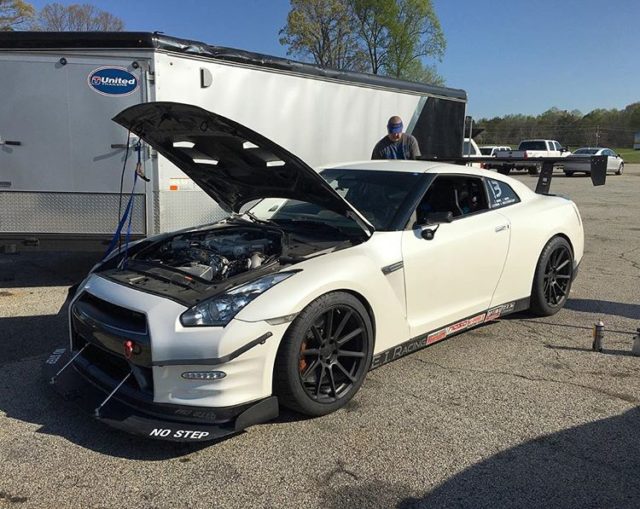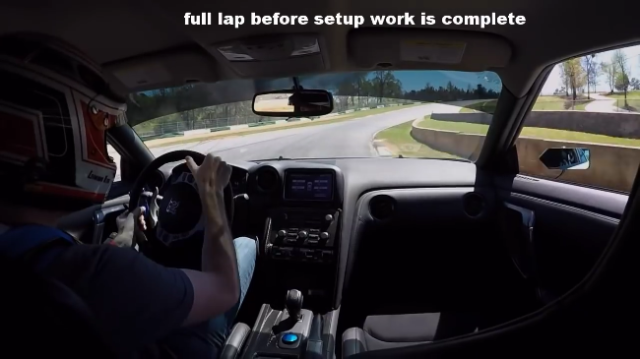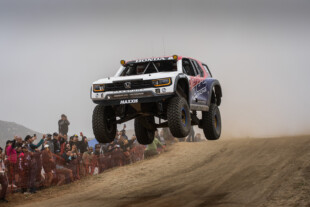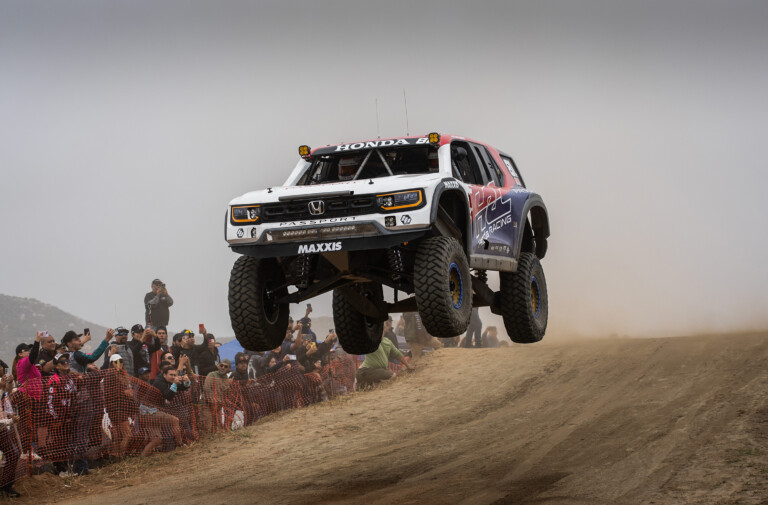Even with superstar talent, there’s a certain limit to what a racing driver can achieve if their machine isn’t working ideally. In truth, a car is always deficient in one area or another and rarely is a setup perfected, but getting the tires and aerodynamics to work well will make a world of difference.
You don’t need anyone more qualified than Leh Keen to prove this. The man is a natural with an exuberant driving style and a penchant for big slides. He’s a veteran of IMSA, Le Mans, Tudor, and more, and he’s very brave—even in multi-million dollar cars.
That 911 was light and underpowered, but this turbocharged GT-R is neither. The tuned road car has a massive front splitter and a rear wing that’s equally monstrous, but it is, essentially, a modified road car suspended by treaded tires. Getting those pieces to work harmoniously is a challenge.
However, if done correctly, it makes a world of difference. As he descends through the daunting Turn One, the Nissan is nervous under braking, and he’s kept from getting on the throttle perhaps a little longer than he’d prefer. Once he applies the power at the apex, the rear’s already started sliding but with a calm, collected head and some talented hands, he catches the drift beautifully. It might look heroic and spectacular, but those stylish slides are slow and inefficient—the quickest laps sometimes look subdued and almost boring.
The Nissan looks composed at slower speeds, but the rears have a tendency to light up over crests and curbs—see Keen’s countersteering at 0:41). What hold Keen back are the big slides—more than twenty degrees of lock or so—that occasionally make him feather the throttle, and if not, keep him busy countersteering. There’s an obvious deficiency with the setup based off of how loose the rear is, and this is a GT-R—not a Silvia.
With a few tweaks to the suspension and the aero settings, it looks as if he’s driving a different car entirely. He can hold a tighter line into Turn One and apply that maintenance throttle a good fifteen feet earlier; allowing him to launch off the corner with a neutral attitude and no opposite lock.
Turning into the fast Turn Five (2:17), the GT-R still breaks away but it’s much less severe this time, and further past the apex. Therefore, he’s able to generate better drive off the corner and dedicate less tire to generating long black stripes. Clearly, the curbs aren’t as jarring as they were previously.
It’s not just corner exit where the Nissan looks neater, but it’s much, much more stable on the brakes. This means his braking distances are shorter, but he’s also able to focus on the middle of the corner instead of hooning his machine vaguely towards the apex. It’s all a smoother, clinical, more disciplined style of driving, and it takes better advantage of the GT-R’s phenomenal traction and world-class powerplant to nip a full second off his time with the same tires. Most racing drivers would trade their mothers for that sort of gain.























